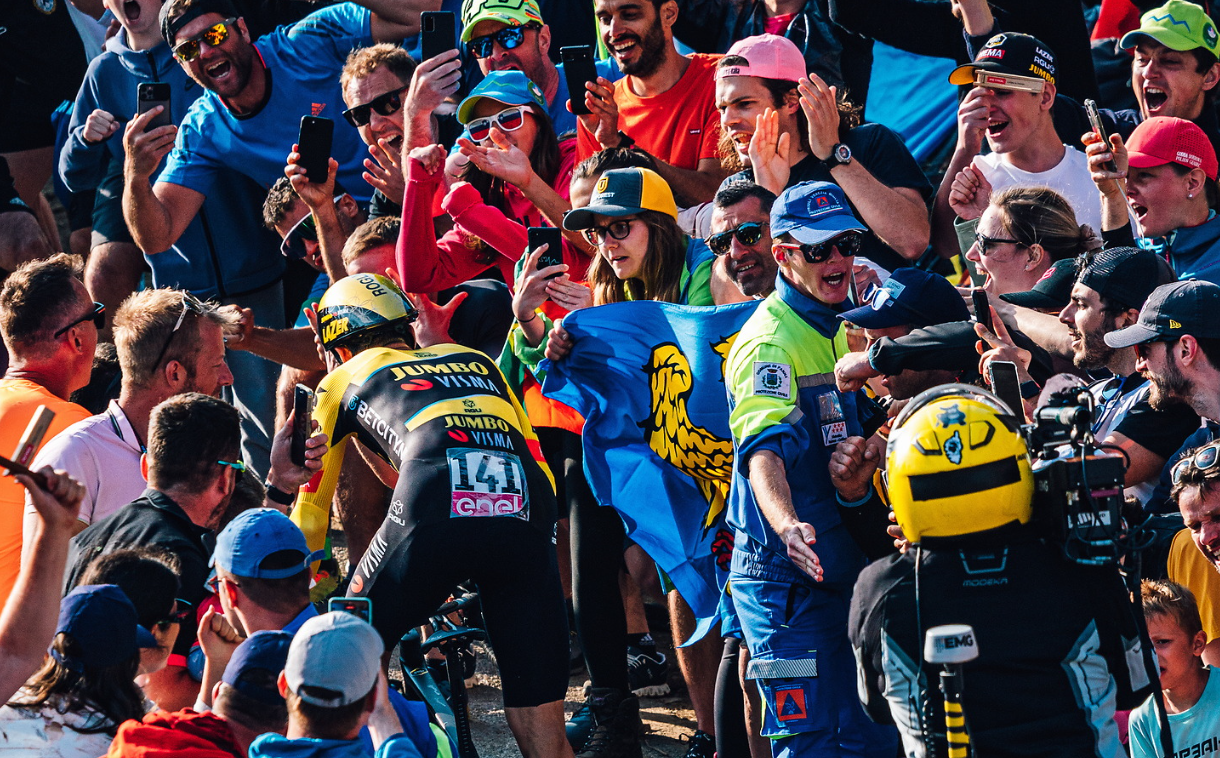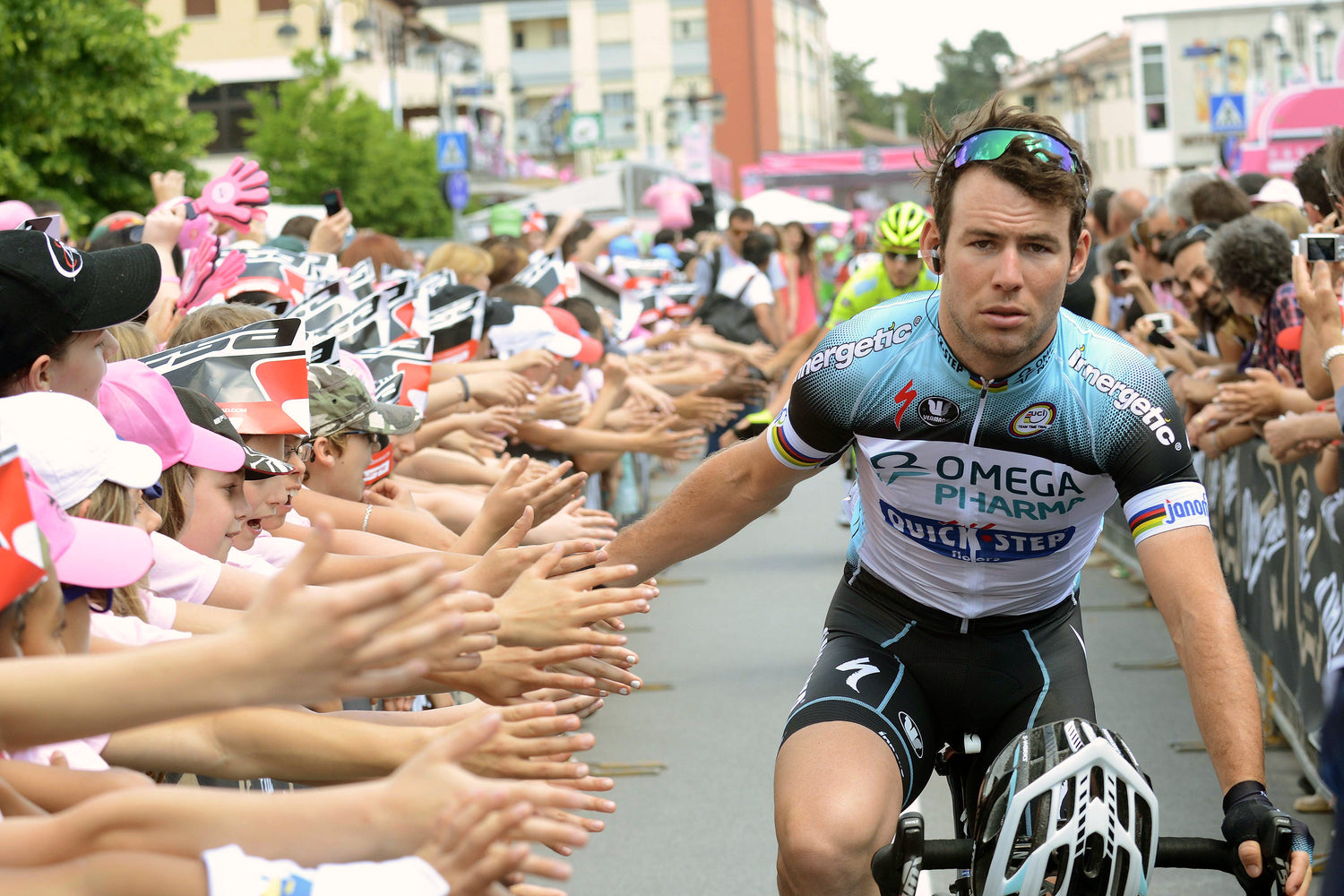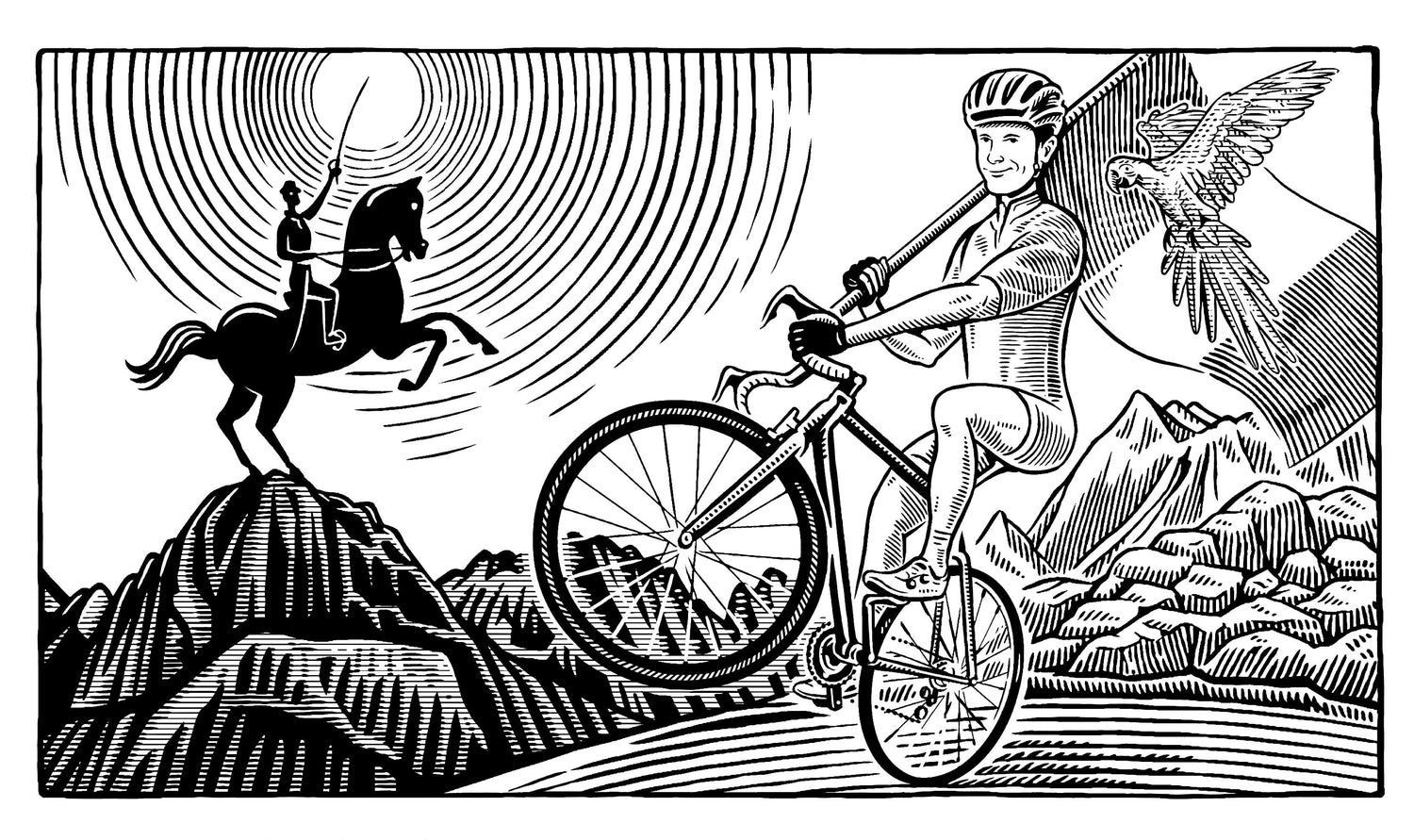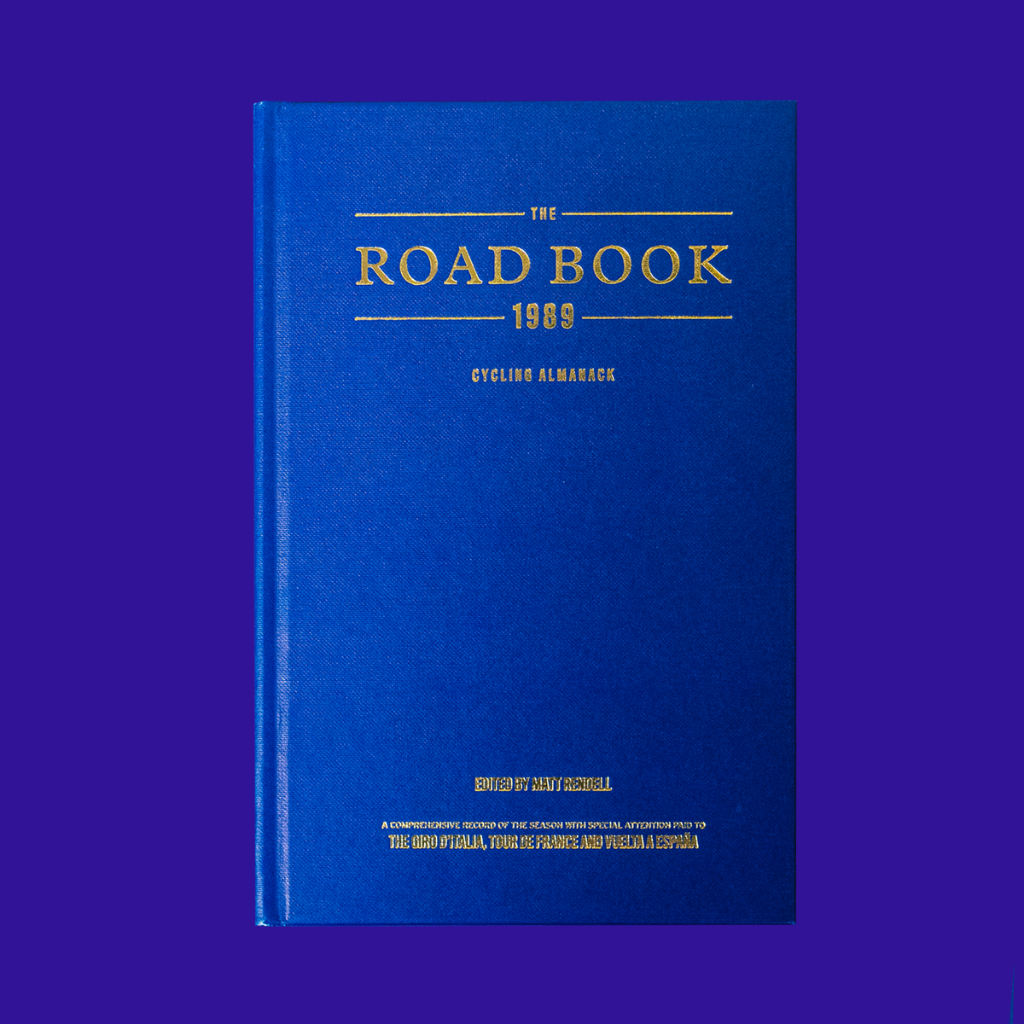From May 4th till the 26th, the sounds of the rattling bike chains and softly whirring wheels of 176 riders alongside the exultant cries of ecstatic roadside fans will reverberate across the Italian countryside as the first of 2024’s Grand Tours sets off. The Giro d’Italia will launch into its 107th edition, the shortest since 1979 at over 3,321.2km long, from Venaria Reale on the outskirts of Turin to the shadows of the Colosseum in Rome. This promises to be either the most exciting and unpredictable, or most banal battle for the Maglia Rosa yet.

Notoriously one of the more chaotic races each season and loved for the drama which that entails, the race organisers, RCS Sport, have tried to tempt the very best of cycling’s talent from the enticing allure of July’s Tour de France. This year, they have succeeded in securing arguably the sport’s biggest star in Tadej Pogačar (UAE Team Emirates), but the other top riders battling for Grand Tour GC places, the likes of Remco Evenepoel (Soudal Quick-Step), Jonas Vingegaard (Team Visma-Lease a bike) and last year’s Maglia Rosa winner Primož Roglič (Bora-Hansgrohe), have through injury or choice, favoured the Tour de France. Geraint Thomas (INEOS Grenadiers) and Ben O’Connor (Decathalon AG2R La Mondiale) will challenge the Slovenian, but if Pogačar is at his scintillating best, as he has been this year, the Giro d’Italia’s general classification battle is looking like a one-horse race.
RCS will be hoping a course which has spread mountain-top GC days throughout the 21 stages (rather than loading them all into the final week as was the case in 2023), will encourage aggressive, attacking racing from early on, adding some intrigue and forcing Pogačar to fight throughout for victory. Either the Slovenian will accrue an unassailable lead early on, as he did at the Volta a Catalunya earlier this year, stultifying the race, or the various other teams will manage to work together to isolate and weaken UAE Team Emirates, and with a little luck, a surprise rider will emerge with a story for the ages.

However, the GC battle isn’t the only story to keep an eye on, as The Giro d’Italia 2023 proved. With initial favourites Evenepoel and Tao Geoghegan Hart (INEOS Grenadiers) suffering from illness and injury resulting in early withdrawal from the race, it was veteran Brit Geraint Thomas (INEOS Grenadiers) and Primož Roglič who duelled for a victory decided by Roglič’s dominance of the Monte Lussari time trial on the penultimate stage. With a slightly disappointing GC race wrapped up, one could’ve been forgiven for missing what we think was the moment of the Giro as the peloton sped its way through the streets of Rome. An isolated Mark Cavendish (Astana-Qazaqstan), who it looked like, for the first time in his career, would leave the Giro without a stage win to his name, found aid unlooked for in his friend of 25 years Geraint Thomas. Seeing Cavendish without a leadout train, ‘[Thomas] just emptied himself… He’s a fucking legend’, in the words of Cav himself, writing for The Road Book 2023. If you want to read this poignant memorial to their friendship, from the pen of the Manx Missile himself, pick up The Road Book 2023 here: https://theroadbook.co.uk/collections/all-products/products/the-road-book-2023

The Route
This year’s course contains roughly 42,900m of elevation gain, in the region of 20% less climbing than in 2023, and combined with the shorter overall length, it could be one which suits Pogačar’s explosive power better than any other rider.
The first two weeks start with a bang, and the course is peppered with the odd GC mountain day throughout alongside 8 sprint finishes, 68.2km of time trials over stages 7 and 14, and a number of routes designed to encourage breakaway attempts. The final week is packed with some huge climbs, and although Pogačar will undoubtedly race aggressively, we expect it will still be close coming in to the defining final few days.

Stage one: Venaria Reale - Torino, 136km
The opening gambit of the Giro features some famous climbs including the Superga (4.9km at gradient of 9.1%) and the Colle della Maddalena (6.1km at 7.4%) before a downhill ride to the finish in Turin for 30km. We think the Colle della Maddalena will see the days decisive attack, with Pogačar getting started and taking a small group to the finish line.
The top of the Superga is encased by a beautifully picturesque basilica. But also plays host to a poignant memorial to the Grande Torino Football team who lost their lives in a horrific plane crash at this site, 75 years to the day. We are sure the ride to the top will be poignant for many of not just the Italian riders, but those who wish to think on those who have been lost.
Stage two: San Francesco al Campo - Santuario di Oropa, 150km
The second stage sees the earliest summit finish since 1989 (pick up a copy of The Road Book 1989 here to read all about that fascinating race) at the Santurio di Oropa after two category 3 climbs earlier in the day. This ‘sacred mountain’ with a picturesque chapel atop its peak, is an 11.8km climb, with an average gradient of 6.2% but with some sectors reaching 13%. The fluctuating gradient will certainly play into Pogačar’s ability to maintain his output on those steeper sections as he did so powerfully in Catalunya so expect an attack here for a few more GC seconds. Although, if his competitors can maintain their coherency and launch some youthful legs in pursuit, it may be a tight finish.
In 1999 it was here that Marco Pantani was forced to stop, his chain having worked its way loose with over 8km to go to the summit. He subsequently rode past 49 other riders and won the stage – before later being disqualified for doping, the start of a long road to a terrible, heart breaking and ignominious end.
Stage three: Novara - Fossano, 165km
The first of the race’s flatish sprint stages, where the likes of Tim Merlier (Soudal Quick-Step) Fabio Jakobsen (DSM-Fermenich PostNL) and Biniam Girmay (Intermarché-Wanty) will battle for a stage win.
Stage four: Acqui Terme - Andora, 187km
The fourth stage features the Col di Melogno (category 3 climb) 88km in which will encourage a breakaway for smaller teams to get their sponsors some valuable TV time. This will be reeled in and it’ll be another day for the fast men. Although the Capo Mele 2km from the finish may well reduce it to a smaller bunch and give those who can punch with a sharp sprint like Christophe Laporte (Team Visma-Lease a bike) a chance for a stage win.
Stage five: Genova - Lucca, 176km
With a couple of small climbs featuring, and especially the Montemagno 19km from the finish in Lucca, a particularly intrepid group, or individual rider might be able to launch a daring break for victory. Most likely however, it will be the race’s third sprint finish in five days.

Stage six: Viareggio - Rapolano Terme, 177km
Stage six promises to be a decisive day for the Giro’s GC battle featuring 12km of Strade Bianche’s distinctive gravel roads within the final 50km of racing, alongside a couple of smaller category 3 and 4 climbs. This combination of short but sharp slopes after a few kilometres of rough treatment on those white roads threatening ill-timed punctures and mechanicals, mean that one of the favourites could face a battle to stay in contention. The Serre di Rapolano climb comes 4km from the end, and with a gradient reaching 20% it looks to be the perfect launch pad for Pogačar to take the stage win, especially given his impressive solo victory at Strade Bianche in March.
Stage seven: Foligno - Perugia, 37.2km – ITT
The first of the Giro’s two sprint days is a long one, clocking in at 37.2km and has the added interest of a 6km category 4 climb, which is shallow for the most part aside from a kilometre where it hits a maximum gradient of 16%. This may allow some of the puncheurs to compete with the time trial specialists, and as we saw last year at the Giro and the Tour, a slip up on the time trial could potentially cost a GC contender the Maglia Rosa.
Stage eight: Spoleto - Prati di Tivo, 153km
A short but spikey day in the Apennines with significant elevation gain is the first opportunity for the pure climbers to stretch their legs and will certainly be marked by those who wish to compete for the mountains jersey. The double punch of the Croce Abbio with 53km to go, followed by a quick descent to the Prati di Tivo (14km at 7% to 12%) could create some splits which could in turn significantly alter GC standings. Though they are not the toughest climbs in the country, the riders will be beginning to feel a week’s worth of pain in their legs, and we could see who is looking the strongest here. Interestingly, Pogačar took a victory on this climb at Tirreno-Adriatico in 2021 (pick-up The Road Book 2021 here to read all about that) so is well acquainted with it and certainly capable of making another attack on it’s slopes stick.
Stage nine: Avezzano - Napoli, 206km
Lots of descending early on before a series of short punchy climbs starting with cat 4 Monte di Procida with 34km to go. There will be a big group heading into these sectors, but a rider with short bursts of powerful climbing in their legs could make a massive gain on their rivals here.
REST DAY
Stage 10: Pompei - Cusano Mutri, 141km
Emerging from the ruins of Pompei, Stage 10 features an uphill finish to Cusano Mutri Village for the first time. It is another slowly rising climb at an average 5.6% gradient which will test the rider’s legs after a day taking some of the strain off.
Stage 11: Foiano di Val Fortore - Francavilla al Mare, 203km
A return to sprinters heaven with the last 80km of this stage flat and straight setting up a fast finish in which positioning will be vital.
Stage 12: Martinsicuro - Fano, 183km
With a stage profile that looks like a jagged set of shark’s teeth, stage 12 brings 10 short but steep climbs which start after 60km of racing and don’t stop for the next 120km. The last of these is San Costanzo about 12km from the finish, which could be the perfect launch pad for a stage win, if a likely winner isn’t far out in front already amongst the small elite group we expect to be going for the stage win. The GC riders will need to be alert, as this is perfect terrain for Pogačar to slip away and gain some time. Their teams will need to mark every move, as if a riders' legs go early on, they will be left behind in the dust very quickly. As the climbs are not the most severe, the sprinters’ teams will fight to keep their riders in contention for the stage win and we may well see someone like Laporte with Classics pedigree amongst the favourites.
Stage 13: Riccione - Cento, 179km
This day is absolutely dead flat, expect a bunch sprint finish.

Stage 14: Castiglione delle Stiviere - Desenzano del Garda, ITT 31km
The final time trial of the race is the more traditional of the two, and unlike last year’s offering, comes with a week’s worth of mountains trailing it. It is unlikely to be truly decisive unless someone blows up completely but it will certainly be a case of managing the time lost with intense care.
Stage 15: Manerba del Garda - Livigno, 220km
As dawn breaks on the first day of the final week of the Giro d’Italia, the riders will be confronted with the longest day of the race, and over 5,400m of climbing as the mountains loom above them. With three category 1 climbs in the final 80km it has the capacity to be a brutal day.
The original course for this day took a brief detour into Switzerland for Forcola di Livigno, but the Swiss Department of Infrastructure, Energy and Mobility refused to authorise a border crossing due to the expense involved. Instead, the peloton faces the terrifying prospect of the Passo del Mortirolo after about 140km. This 12.6km climb has an average pitch of 7.6% but rising to 16% at points. It is an unforgiving climb and expect some big GC moves. They might not be able to win the stage or the race outright here, but a small selection can certainly be made, and time gaps may well be opened whilst the legs are fresh.
Following this monster, there is a descent before the Passo di Foscagnio which is a little more forgiving, its 15km stretch only an average gradient of 6.4%, before the stage’s kicker up the Mottolino with the final stretch using the Ski Slope. With sections of this hitting an 18% gradient, it promises to be a gruelling end to an already tough day, and any gaps which have appeared early in the day will only widen here. Not only is this the kind of parcour on which Pogačar excels, but in recent years he has used the Livigno area as a training base so will be intimately acquainted with the contours of its roads giving him a further advantage on his maiden Giro appearance.
Stage 16: Livigno - Santa Cristina Valgardena, 202km
It doesn’t get any easier with Stage 16 either, on what is an intriguingly laid out day. The peloton will hit one of Italy’s most famous mountain climbs, and the race’s highest point at the Stelvio Pass which is a long climb at 20km and with some sections of it hitting a 14% gradient its certainly a tough prospect, made tougher by the poor weather which has dogged it’s appearances and often caused the stage to be cut short, abandoned or partially neutralised. If the Stelvio appeared later in the day, it certainly would have been decisive, but coming after just 33km it seems to be intended as a launch pad for a breakaway.
This could create an interesting situation, if a GC rider or their team member can get up the road here, the prospect of massive time gaps opening would certainly put the peloton under pressure from early on. The stage ends with the double-punch of the Castelrotto and Passo Pinei climb, which has sections as steep as 15% and will be where the stage is won and any GC gaps solidified.
A shorter stage but with 5 categorised climbs and 4,200m of elevation gain, stage 17 will be another tough prospect. After just 9km the riders hit the Stella Pass for 8.9km of riding at 7.4% before shooting down 30km of descent before the Passo Rolle category 1 climb which is long at almost 20km, but fairly shallow and the category 3 Passo Gobbera before the GC action really heats up with the final two climbs.
The 13.3km long Brocon Pass appears twice, the first time with 50km to go where they will face some sections hitting 12% gradient, a tough but not insurmountable prospect. However, with very little flat between the first and second, tougher ascent of the pass with 14km to go, this time from the tougher South-Western approach, the decisive move could come on the first ascent, with the leading group or leader using the second climb to cement their advantage. Furthermore, with the last 2km of racing averaging a gradient of 12%, this tough uphill finish is exactly where only the very best will be capable of excelling. Pogačar in particular loves this kind of terrain and has previously used these double-punch sharp climbs to create a gap, and then make it stick. The Giro d’Italia hasn’t graced this pass since 1967, and we think it will be a return worthy of fireworks this year.
Stage 18: Fiera di Primiero - Padova, 166km
The climbers get a rest, and the sprinters get a chance to have some fun, with a singular category 4 climb early on, but otherwise quick downhill to a flat finish in Padova that will be taken at considerable pace by those who have survived the mountains.
Stage 19: Mortegliano - Sappada, 154km
There are some tough, shorter climbs on this day, but none of the truly mammoth mountains as the peloton tries to conserve some energy for the Queen Stage on the penultimate day. The Passo Duron features with 100km to go, and at a 9.6% average gradient which hits almost 20% at points, which may well play a part in the GC competition, if that hasn’t already been tied up, and might encourage a breakaway though with Sella Valcalda and the final climb to Sappada still to come it probably comes too early to be anything other than a hump to slow the peloton down.
Stage 20: Alpago - Bassano del Grappa, 175km
The penultimate, and arguably Queen Stage of the Giro d’Italia 2024 has a deceptively simple opening, fairly flat before the infamous Monte Grappa rears its head for the first time after 80km and then emerges from the mist again after 135km of racing. The Monte Grappa is a beast of a climb, 18.2km long with an average gradient of 8-9% which will drain any last reserves of energy. Sections of the climb do hit 17% and could be used as launchpads by any riders with better strength than their rivals, and if the GC is close at all, it will be here that it is bitterly contested for the final time. Indeed, RCS will be hoping for a tough and decisive fight to ensure that as the Peloton rolls into the heart of Italy’s cycling industry in Veneto, it will feel like a worthy homecoming.
Stage 21: Roma - Roma, 126km
The final stage is a parade for GC riders, simply hoping to stay out of trouble as the sprinters fight for position on laps of Rome. This iconic finish in the shadow of the Colosseum has the potential to be career defining for sprinters however, and has certainly provided some surprises in the past.

Riders to Watch
There are a number of sprinters to watch, who will be hoping to win in the lee of one of the world’s most famous landmarks. The likes of Tim Merlier (Soudal-Quick-Step) and Jonathan Milan (Lidl-Trek) have both had fantastic seasons so far and will be amongst the favourites to pick up stage wins. Olav Kooij (Team Visma-Lease a bike) makes a highly anticipated Grand Tour debut and Juan Sebastian Molano (UAE Team Emirates) will expect to pick up a couple of stage wins. Otherwise, Fabio Jakobsen (DSM Firmenich PostNL) and Caleb Ewan (Jayco AlUla) are both riders of immense pedigree who have sadly struggled this season so we hope they manage to compete with the likes of Sam Welsford and his potentially lethal Bora-Hansgrohe lead-out. In 2022 Eritrean Biniam Girmay (Intermarché-Wanty) became the first man from Sub-Saharan Africa to win a Grand Tour stage (read about his victory in The Road Book 2022) and we expect him to be right up there fighting to add to this tally.
There are a few general classification contenders with strong teams, Romain Bardet comes off a strong second at Liège-Bastogne-Liège to lead DSM-Firmenich PostNL and as a veteran of 3-week stage racing will have a few tricks up his sleeve. Daniel Martinez was part of a slew of new arrivals at Bora-Hansgrohe over the break, and bested Remco Evenepoel to the mountain finishes at the Tour ao Algarve where he won two stages and the mountains classification. Shorn of last year’s winner and new arrival Primož Roglič, it’s a perfect opportunity for Martinez to stamp his name as a race leader for the German Team. Two time World Champion Julien Alaphilippe makes his Giro debut for Soudal Quick-Step and will hope to revive his faltering last few seasons with a victory. Italian viewers will be hoping the young talents of Antonio Tiberi and Damiano Caruso will be able to bring them some joy on home tarmac with Bahrain Victorious, though they may be a couple of seasons away from competing with the very best.
Ben O’Connor performed well and won a stage at the 2020 Giro, and starts as GC leader for Decathlon AG2R La Mondiale for the first time since joining them. His season has been building slowly, finishing 2nd at The Tour of the Alps and the UAE Tour and 5th at Tirreno-Adriatico so perhaps we might see a return to his best. Visma-Lease a bike have had an underwhelming season so far by their incredibly high standards, and the Dutch team have lost last season’s winner to Bora-Hansgrohe whilst their GC stars Sepp Kuss and Jonas Vingegaard miss out. Laporte will lead them in stoic fashion and will be supported by Jan Tratnik and young star Cian Uijtdebroeks making his Giro debut. Both are admirable talents with Uijtdebroeks finishing in the top-10 at last season’s Vuelta and the Dutch team will hope he can perform beyond his tender years.

INEOS Grenadiers house Pogačar’s main rival in Geraint Thomas, the veteran Brit having come so close to victory last season. He has had a fairly quiet year so far, but may have simply been saving himself for this effort at grasping a Giro victory. The former Tour de France winner (read about that by picking up The Road Book 2018) will be supported ably by a strong team featuring: Filippo Ganna, Johnatan Narvaez, Magnus Sheffield, the two Swifts and Tobias Foss (former TT world champion) alongside young Thymen Arensman who finished 6th last year.
However, the whole peloton will have its work cut out attempting to best the favourite: Tadej Pogačar. Having demolished the Volta ao Catalunya pretty much at will in March as well as dominating Liège-Bastogne-Liège and Strade-Bianche the Slovenian is in seriously impressive form. The course will also suit Pogačar’s racing style, able to make a difference on those steep, but not huge mountains and we could be about to witness the first Giro-Tour double since Marco Pantani in 1998. He will also be supported by Mikkel Bjerg, Juan Sebastian Molano and Domen Novak who was particularly key to his Liège-Bastogne-Liège victory. It will take something truly astounding for Pogačar to be thwarted, though he has been known to launch impetuous attacks, letting his racer’s nature get the better of him. If the rest of the field work together to tempt him and break the Slovenian through successive attacks on the toughest days they may manage to draw the venom from Pogačar’s attacks, forcing him to choose between hard-fought success at the Giro, or saving some energy for the looming spectre of Jonas Vingegaard and the Tour de France.
Written by Henrik Bassett
All images courtesy of Russ Ellis







